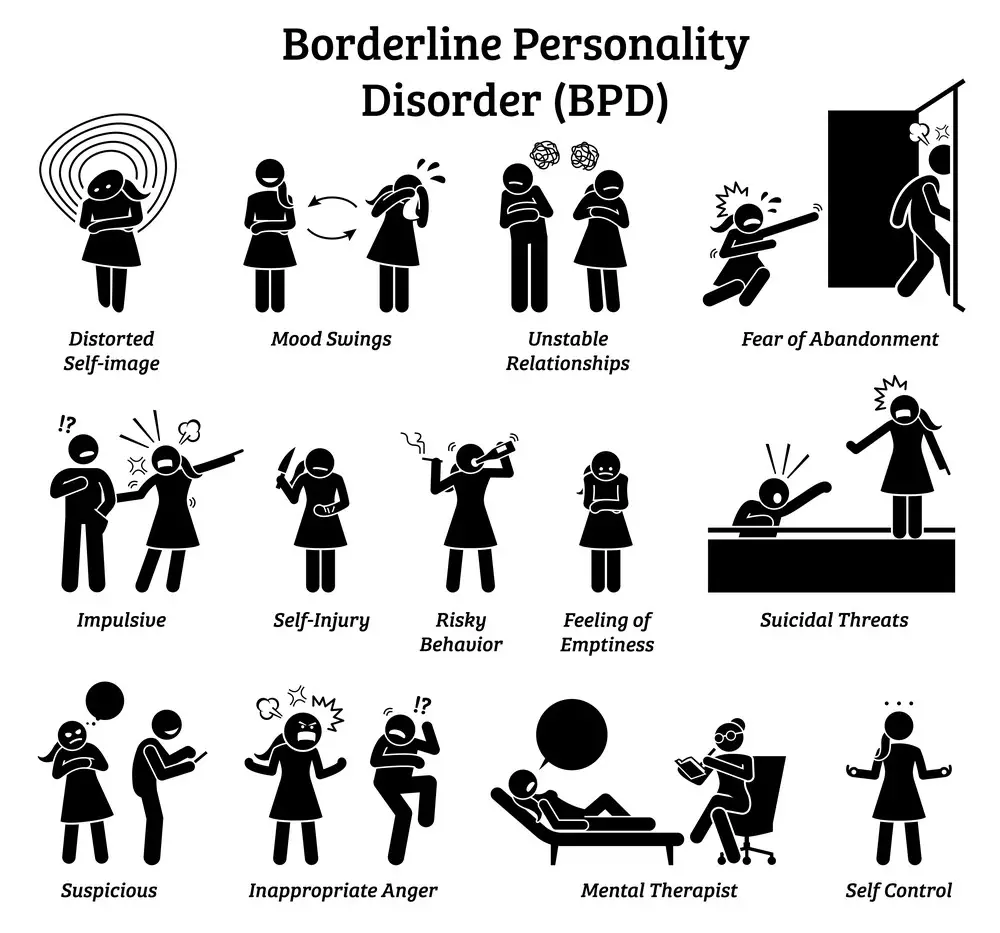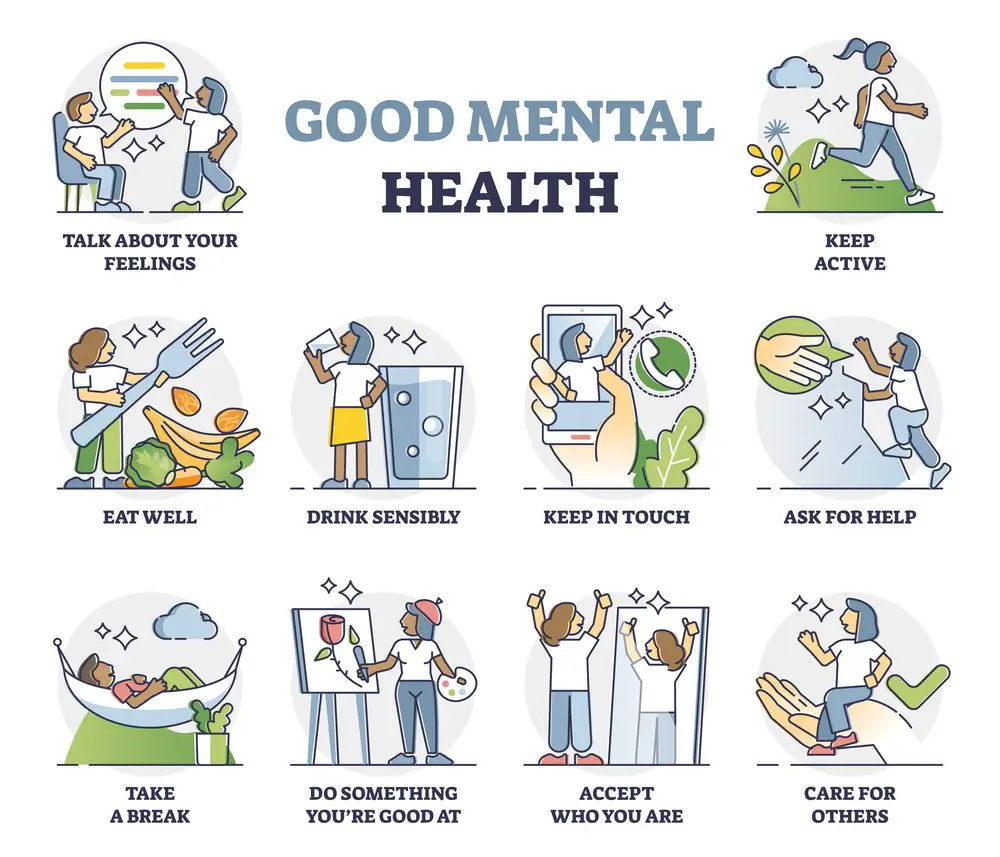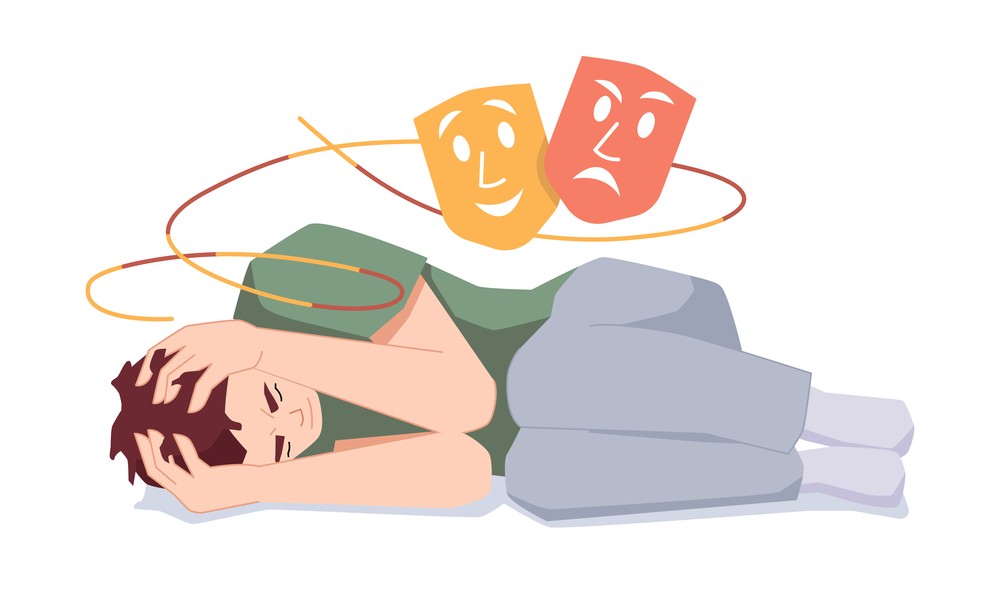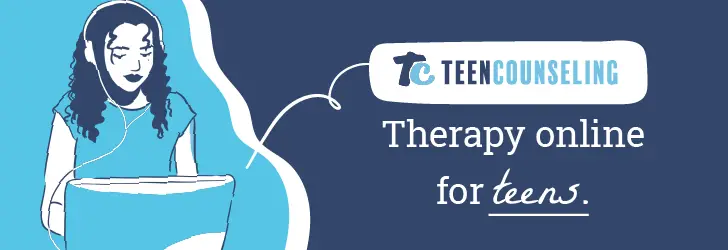As a BetterHelp affiliate, we receive compensation from BetterHelp if you purchase products or services through the links provided
When a loved one is diagnosed with borderline personality disorder (BPD), it can be challenging and confusing for the entire family. The struggle is even more significant as a parent when your daughter lives with this intense and unpredictable mental health condition. You and your daughter can navigate this journey together toward the best possible outcome with the proper support, understanding, and communication.
Understanding BPD is crucial in helping your daughter cope with her diagnosis. Equipping yourself with knowledge about the causes, symptoms, and best practices for treatment can provide you with the tools and insights needed to support her as she faces her daily challenges. It’s also essential to acknowledge your own emotions, as coping with the impact of BPD on family dynamics can be a challenging process for parents.
Key Takeaways
- Understanding BPD is crucial for supporting your daughter
- Explore treatment options to find what works best for her
- Prioritize open communication and validation to build trust and understanding

Understanding Borderline Personality Disorder
Borderline Personality Disorder (BPD) is a complex mental health condition that can significantly impact the daily lives of those affected and their loved ones. This section will cover the signs and symptoms of BPD and its causes and triggers.
Signs and Symptoms
BPD patients often experience intense emotions, mood swings, and emotional volatility. Some of the key signs and symptoms include:
- Intense and fluctuating emotions
- Difficulty maintaining stable relationships
- Fear of abandonment or rejection
- Impulsive behaviors, such as self-harm or substance abuse
- Aggression and anger, often followed by guilt or shame
- Dissociation and episodes of feeling detached from reality
- Chronic feelings of emptiness
These symptoms can vary in severity and duration and may be triggered by seemingly minor events or interactions.
Causes and Triggers
The exact causes of BPD are not fully understood, but it is believed that a combination of genetic, biological, and environmental factors contribute to its development. Some potential causes and triggers include:
- Trauma or abuse during childhood
- A family history of mental health issues, such as personality disorders
- Brain abnormalities, including differences in the size or functioning of specific regions
Certain situations or experiences may act as triggers for individuals with BPD, causing symptoms to worsen. Some common triggers include:
- Feelings of rejection or abandonment
- Stressful life events, such as the loss of a job or the end of a relationship
- Post-traumatic stress disorder (PTSD), which can cause intense flashbacks to past traumatic events
Understanding BPD’s signs, symptoms, and triggers can help you and your loved ones better manage the condition and seek appropriate support. Remember, it’s important to consult with a mental health professional for an accurate diagnosis and tailored treatment recommendations.

Exploring Treatment Options
Therapeutic Approaches
When considering treatment options for your daughter with borderline personality disorder (BPD), you might want to explore dialectical behavior therapy (DBT). DBT is a well-established therapeutic approach specifically designed to help people with BPD. It aims to teach mindfulness, emotional regulation, and interpersonal effectiveness, which could be beneficial for managing BPD symptoms.
- Mindfulness: By learning mindfulness techniques, your daughter can increase awareness of her thoughts, emotions, and body sensations. This will help her avoid impulsive decisions and better tolerate distressing situations.
- Emotional Regulation: A crucial aspect of DBT, emotional regulation can provide your daughter with tools to manage extreme emotional reactions and regain control of her emotions.
- Interpersonal Effectiveness: Mastering interpersonal skills can support your daughter in setting and maintaining healthy boundaries, improving communication, and understanding social dynamics.
To provide the best support possible, seek a therapist experienced in DBT and BPD treatment. Discuss your daughter’s specific needs and goals with the therapist, and work together to create a treatment plan tailored to her situation.

Living with Stability
Establishing stability in your daughter’s life is another essential aspect of helping her cope with BPD. Here are some tips on how to maintain stability and promote self-care:
- Routines and structure: Encourage a daily routine filled with healthy habits, such as regular sleep and wake schedules, exercise, and balanced meals. This can help your daughter feel anchored and less overwhelmed.
- Healthy boundaries: Talk to your daughter about setting and maintaining appropriate boundaries with friends, romantic partners, and family members. Ensuring she has a solid support system while minimizing negative influences can cultivate a more stable environment.
- Self-care activities: Encourage your daughter to incorporate self-care activities into her daily routine, such as journaling, meditation, or a hobby she enjoys. These practices can improve her mental health and give her a stable sense of self.
Remember to encourage open communication with your daughter and support her through the process. Although the road to recovery will not be easy, investing in treatment and providing stability can significantly improve your daughter’s well-being and help her manage BPD symptoms effectively.
Key takeaway: To best support your daughter with BPD, explore dialectical behavior therapy (DBT) as a treatment option and promote stability in her life through routines, healthy boundaries, and self-care activities.

Navigating Emotions and Relationships
Managing Mood Swings and Emotional Volatility
When managing mood swings and emotional volatility, it’s essential to recognize and understand your emotions. Be mindful of triggers that can set off a roller coaster of emotions. Try to identify patterns and work on addressing any underlying issues.
To regulate your emotions, practice self-soothing techniques like deep breathing, meditation, or engaging in activities that bring you joy. Step back when overwhelmed or upset and give yourself space to cool down. Remember, seeking professional help is okay if you need additional support in managing your emotions.
Key takeaway: Recognize your triggers and practice self-soothing techniques to manage mood swings and emotional volatility better.
Establishing Healthy Boundaries in Relationships
Establishing healthy boundaries is crucial in any relationship, especially for those with borderline personality disorder. To set boundaries, identify what makes you feel comfortable and safe. Communicate your needs clearly and assertively to avoid misunderstandings.
When setting limits, be specific and consistent. Focus on your well-being and ensure you don’t sacrifice your needs for others. If you notice someone continually crossing your boundaries, consider discussing the issue or reevaluating the relationship.
It’s essential to show compassion both to yourself and others. Don’t be too hard on yourself if you slip up, and remember, healthy relationships require mutual respect and understanding.
Key takeaway: Set clear and consistent relationship boundaries, communicate your needs, and practice self-compassion.
Fostering Communication and Validation
Understanding and Responding to Fear of Abandonment
When talking to your daughter with borderline personality disorder (BPD), it’s crucial to recognize that she might have an intense fear of abandonment. This fear can sometimes result in sudden mood swings, making connecting challenging. To help with this, remember to:
- Show empathy towards her feelings and experiences.
- Assure her of your continued support and love.
- Avoid actions or words that might trigger her fears.
Embrace patience and empathy to create a safe space for open communication.
Effective Communication Strategies
To foster healthy communication, consider the following tips:
- Active listening: Focus on what she’s saying verbally and non-verbally. Make eye contact, nod in agreement, and occasionally repeat her words back to her to show you’re understanding.
- Be supportive: Offer validation and encouragement. Respond with statements like, “I understand how you feel,” or “That must have been tough for you.”
- Keep it simple: Use clear, concise language and avoid overloading her with too much information at once.
- Stay calm: If things get heated, breathe and calmly return to the conversation later.
- Seek professional help: A therapist or counselor can guide you on supporting your daughter and improving your communication skills.
Rely on these effective communication strategies to build trust, understanding, and validation with your daughter.

Supporting Your Daughter’s Independence and Self-Esteem
Encouraging Personal Interests
Encouraging your daughter’s interests is essential, as these can contribute significantly to her independence and self-esteem. Start by asking her what she enjoys doing or has a passion for, and then help her explore those interests. Introduce her to new hobbies, clubs, or activities that may align with her passions. Doing so promotes her independence and fosters a sense of accomplishment and a positive self-image.
Key Takeaway: Support your daughter’s interests to boost her independence and self-esteem.
Building Self-Esteem
Building self-esteem in your daughter with borderline personality disorder requires patience and consistency. One way to achieve this is by providing regular positive reinforcement. Praise her genuine efforts and accomplishments, no matter how small they may seem. Moreover, express your unconditional love and support, reminding her that you care about her well-being and believe in her abilities.
Another great strategy is to help her set realistic goals and celebrate her achievements. Break down larger goals into smaller, achievable steps to make the process more manageable.
Finally, teach her the importance of self-compassion and self-care. Encourage her to treat herself kindly and remind her that it’s okay to make mistakes and learn from them. You’ll help her develop healthy self-esteem and a more positive self-image by fostering a non-judgmental and supportive environment.
Key Takeaway: Build your daughter’s self-esteem by providing positive reinforcement, helping her set realistic goals, and teaching her the value of self-compassion.
Crafting the Heartfelt Letter Your Daughter with BPD Needs: A Compassionate Blueprint for Parents
Writing a letter to your daughter with Borderline Personality Disorder can be a thoughtful and effective way to convey your love, support, and understanding. A letter allows you to articulate your thoughts carefully and gives her the space to process your words at her own pace. Here’s a guide to crafting such a letter, covering the what, the why, and the how.
Why Write a Letter?
- Time to Reflect: Both you and your daughter will have the time to carefully consider your words, away from the heat of emotional moments.
- Personal and Meaningful: A letter is an intimate way to connect. It shows effort and thoughtfulness.
- No Interruptions: The uninterrupted nature of a letter can be beneficial when discussing complex feelings or ideas.
What to Include?
- Affection and Support: Make sure the first thing your daughter reads is that you love and support her unconditionally.
- Your Understanding: Talk about your efforts to understand BPD and how it affects her life. This shows empathy and commitment.
- Validation: Acknowledge her feelings and experiences without judgment. Validation can be incredibly affirming for someone with BPD.
- Your Own Feelings: Be open about your emotional journey, but ensure this doesn’t overshadow her own experience.
How to Write It
- Be Sincere but Careful: Honesty is crucial, but so is tactfulness. Choose your words carefully to avoid misunderstandings.
- Structure: Logically arrange your thoughts. Perhaps start with an introduction, follow with the body of the letter where you discuss your main points, and end with a loving conclusion.
- Tone: Aim for a loving, encouraging, and optimistic tone. You want the letter uplifting, not a laundry list of problems.
Tips
- Seek Professional Guidance: If you’re unsure what to include or how to frame it, consult mental health professionals who understand BPD.
- Multiple Drafts: Don’t hesitate to write multiple drafts. This is a significant letter; it’s okay to take your time to get it right.
- Be Open for a Follow-Up: Mention that you’re open to discussing the letter further when she’s ready. This could be a good stepping stone for more open communication.
In a Nutshell
- Why: A letter offers a personal, thoughtful, and uninterrupted medium for complex communication.
- What: Include affirmations of love and support, validation, your understanding of BPD, and your emotional journey.
- How: Be sincere but careful with your words, organize your thoughts clearly, and maintain an encouraging tone.
Writing a letter to your daughter can be a therapeutic process for you and a heartfelt gift for her. Done thoughtfully, it can strengthen your relationship and serve as a tangible symbol of your support and love.
Navigating Mental Health in School
Supporting Academic Success
As the parent of a daughter with borderline personality disorder (BPD), helping her to succeed academically is an important goal. Communicate openly with the school and your daughter’s teachers to do this. Discuss her learning needs and work together to create an Individualized Education Plan (IEP) or a 504 plan that outlines accommodations tailored to her unique situation.
Some of the possible accommodations might include:
- Extended time for assignments and tests
- Frequent breaks during classes
- A quiet place to work or take tests
- Social skills or coping strategies training
Key takeaway: Communication and collaboration with the school are essential in supporting your daughter’s academic success.
Addressing Peer Rejection and Judgement
Dealing with peer rejection and judgment can be incredibly challenging for your daughter due to her BPD. Here are some strategies to help her navigate the social aspects of school:
- Encourage open dialogue: Talk with your daughter about her feelings and experiences at school. Help her recognize and understand her emotions, and support her as she faces challenges.
- Teach appropriate coping skills: Develop coping strategies together, like deep breathing, mindfulness, or grounding techniques, for your daughter to use when she feels overwhelmed or judged by her peers.
- Work with school staff: Inform your daughter’s teachers and the school counselor about her BPD diagnosis and discuss ways they can support her in the school environment. They can help guide your daughter and intervene when she may be experiencing rejection or judgment.
- Promote social skills: Encourage your daughter to join clubs, activities, or support groups to help her build positive relationships with peers. By fostering a sense of belonging and acceptance, she can better manage feelings of rejection and judgment.
Key takeaway: Addressing peer rejection and judgment requires open communication and collaboration between you, your daughter, and her school, along with empowering her to develop strong social skills and coping strategies.
Looking After Your Own Wellbeing
Self-Care and Avoiding BurnOut
When supporting your daughter with Borderline Personality Disorder (BPD), you must prioritize your well-being. Regular self-care can help you avoid burnout, which ultimately benefits you and your daughter. Here are some self-care tips:
- Establish routines: Healthy routines for yourself, such as exercise, proper nutrition, and good sleep habits, can help you maintain energy levels and emotional steadiness.
- Set boundaries: Know your limits and communicate them to your daughter. Setting boundaries can protect both of you from emotional turmoil and stress.
- Take breaks: Permit yourself to take regular breaks from caregiving. Engaging in leisure activities or hobbies can help recharge your batteries.
- Practice mindfulness: Incorporating relaxation techniques like meditation, deep breathing, or yoga can help you stay grounded and manage stress.
Remember, taking care of yourself isn’t selfish; it’s essential for your well-being and ability to support your daughter effectively.
Joining a Support Group
You don’t have to navigate this journey alone. Joining a support group for parents or loved ones of individuals with BPD can offer valuable resources, advice, and a sense of community. In a support group, you’ll find:
- Shared experiences: Establish connections with others who understand your challenges and can offer insight from their experiences.
- Sound advice: Gain practical tips and strategies from others in your shoes. Learn what works and what doesn’t in supporting your child with BPD.
- Emotional support: Having a safe space to vent, share your feelings, and receive empathy from others who understand your struggles is helpful.
- Educational resources: Support groups often provide access to resources and information on BPD, which can help you better understand your daughter’s experiences and improve your ability to support her.
To find support groups, contact your local mental health organizations or search online for dedicated websites and forums. Remember, being part of a support group can make a positive difference for you and your daughter.

? When It’s Time to Seek Professional Help: Unveiling the Red Flags ?
Noticing when therapy is needed can be a delicate balance, as the signs can sometimes blend in with life’s typical ups and downs. However, specific indicators indicate it might be time to seek professional help.
- Heightened Emotional Intensity: If emotions are becoming increasingly overwhelming for your daughter and are affecting her daily life, that’s a sign.
- Relationship Strain: Are friendships and family bonds deteriorating? Relationship difficulties can be a hallmark of BPD.
- Impulsive Behaviors: Risk-taking or self-destructive behavior calls for immediate intervention.
? Mapping the Road Ahead: Setting Goals for Therapy ?
Entering therapy without goals is like sailing without a compass; you might make progress, but it’ll be hard to know if you’re going in the right direction.
- Emotional Regulation: Learning coping mechanisms to manage emotions can be a primary goal.
- Improved Relationships: A common goal is to enhance interpersonal skills to foster healthier relationships.
- Self-Awareness: The more your daughter understands herself, the easier it will be for her to navigate life with BPD.
? Blossoming Progress: Recognizing the Baby Steps and Big Leaps ?
Progress in therapy is rarely a straight path, and it’s crucial to celebrate both small victories and significant milestones.
- Behavioral Changes: A drop in impulsive behaviors or heightened emotional reactions can be an early sign of progress.
- Improved Communication: If your daughter starts opening up more to you and her therapist—that’s a positive sign.
- Consistency: One of the most underrated signs of progress is consistency. You’re on the right track if good days start outnumbering the bad.
In a Nutshell ?
- Know When to Seek Help: Recognize the red flags indicating the need for professional support.
- Set Tangible Goals: Goals give therapy direction and purpose, making the journey more navigable.
- Celebrate Progress: Big or small, every step forward is a victory worth acknowledging.
By understanding when to seek therapy, setting achievable goals, and recognizing progress, you can contribute meaningfully to your daughter’s journey with BPD. It’s a collaborative effort that can strengthen your relationship and offer both of you a brighter, more stable future. ?
Frequently Asked Questions
How to set healthy boundaries with a daughter who has BPD?
Establishing clear and consistent boundaries with your daughter with BPD is essential. First, communicate openly about the boundaries you must maintain, such as limits on emotional outbursts or aggressive behavior. Be assertive but kind in your communication. Ensure you’re both on the same page and remember to reevaluate your boundaries periodically.
- State your boundaries directly.
- Be consistent in enforcing them
- Revisit and adjust as needed
- Use mindfulness techniques to stay centered when enforcing boundaries
Key takeaway: Maintaining healthy boundaries is crucial when supporting a person with BPD – clear communication and assertiveness will make this process smoother.
What are effective communication strategies when dealing with a BPD daughter?
Open, honest, and empathetic communication is crucial when interacting with a BPD daughter. Here are some strategies:
- Use active listening and reflect her feelings
- Stay calm and centered in the conversation
- Address the underlying feelings, not just surface behaviors
- Express your concerns using “I” statements
- Practice patience and maintain a non-judgmental attitude
Key takeaway: To communicate effectively with your BPD daughter, focus on empathy, patience, and active listening.
How can a parent help their adult daughter with borderline personality disorder?
Supporting an adult daughter with BPD can be challenging but essential. Consider these tips:
- Encourage her to seek professional help (therapy, medication, support groups)
- Help her develop a support network
- Validate her feelings and experiences
- Encourage healthy coping mechanisms
- Model appropriate behaviors and emotional regulation
- Remember self-care – it’s essential for your well-being
Key takeaway: Focus on encouraging professional help, support, and understanding in your journey together.
How to navigate family relationships when your daughter has BPD?
Navigating family dynamics with a BPD daughter can be tricky. Here are some suggestions:
- Address the issue as a family, keeping an open dialogue
- Set realistic expectations for everyone involved
- Educate the family about BPD to increase understanding and empathy
- Maintain consistency in your approach across family members
- Seek family therapy if necessary
Key takeaway: Open communication, education, and consistency will help your family navigate the complexities of BPD together.
What are coping mechanisms for parents of children with borderline personality disorder?
Parents need to take care of themselves when supporting a child with BPD. Some coping strategies include:
- Seek therapy or support groups for yourself
- Practice stress reduction techniques (meditation, exercise, mindfulness)
- Remember why boundaries matter and maintain consistency
- Build a support network of understanding friends or peers
- Focus on self-care, ensuring you prioritize your well-being
Key takeaway: Prioritizing your wellness and self-care is essential when supporting a loved one with BPD.
How to detach from and offer support to a loved one with BPD?
Maintaining a balance between detachment and support can be difficult. Keep these tips in mind:
- Practice emotional detachment to protect your well-being
- Offer support by actively listening and validating their feelings
- Encourage your loved one to seek professional help
- Recognize your limitations and accept that you can’t control everything
- Celebrate small progress and accomplishments
Key takeaway: Balancing detachment and support is crucial – focusing on communication, encouragement, and understanding will help create a healthy dynamic.
About Jacob Maslow
After surviving the traumatizing events of 9/11, I took it upon myself to heal through helping others. I was Mr. Mom for many years and understand from first-hand experience the lonely paths you have to walk as a partner and parent when leaving an unhealthy relationship.
We’re all echoing in a dark space that doesn’t have to be this empty, and that’s been my mission since finding solace and recovery in therapy: To help comfort others who are still in shock and at the prime of their struggle.
I came across BetterHelp after searching for this type of community. I wanted to belong to a body of proactive therapists and supportive therapy veterans that allowed me to see other sides of the story.
It was unconventional, and that’s what attracted me most. During my most challenging times, when my ex-wife completely cut me off from my children, I found comfort and clarity through BetterHelp.
Instead of being chained to a strict therapist recommendation, I was in charge of who I felt understood my struggle most. That allowed me to find my true peace, as I was reunited with those who read behind my words and had first-hand experience with my trauma.
Recovery is a choice; with BetterHelp, that choice will be a few clicks away. You can join their couples-oriented platform, Regain.us, for those stuck with family estrangement and toxic relationship patterns.
- 3 Ways Wearing a Hat Can Help Lower Your Stress Levels - April 19, 2025
- Breaking the Silence: Why Men’s Mental Health Matters More Than Ever - April 15, 2025
- How to Transform a Home’s Patio Space into a Relaxing Space - March 23, 2025
This site contains affiliate links to products. We will receive a commission for purchases made through these links.





